Those of us who love Pompeii will be happy to know that research there continues, which is always good news for a site that is frequently in danger of succumbing to the elements, political exigencies and funding shortages. Scholars in religious studies, classics, archaeology and other fields routinely reveal new evidence from excavations and novel ways of examining old findings. 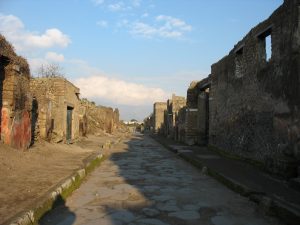 In Part I, we will look at several presentations on Pompeii from the recent Annual Meetings of the Archaeological Institute of America (AIA) and the Society of Biblical Literature (SBL) and a mapping project from a research university. In Part II, we will review a book by a New Testament (NT) scholar who uses Pompeiian demographics to shed intriguing light on Paul’s letter to the Romans.
In Part I, we will look at several presentations on Pompeii from the recent Annual Meetings of the Archaeological Institute of America (AIA) and the Society of Biblical Literature (SBL) and a mapping project from a research university. In Part II, we will review a book by a New Testament (NT) scholar who uses Pompeiian demographics to shed intriguing light on Paul’s letter to the Romans.
The Temple of Isis at Pompeii
Professor Emeritus Frederick E. Brenk, SJ, of the Pontifical Biblical Institute in Rome has been looking at how material evidence and artifacts can contribute to our understanding of Graeco-Roman religion. At the 2020 SBL Annual Meeting (held virtually), Brenk discussed nine small pieces from the Temple of Isis at Pompeii: a small Egyptianizing herm, a brazier, a set of candelabra with lotus petal tops, a sistrum, a decorated cista of lead, a glass mug decorated with a Victory, a statuette of a squatting Egyptian male divinity of faience (Ptolemaic period), a sphinx, and an ushabti (mummified figurine) of glazed faience (7th or 6th cents BCE). Brenk argues that “only about half of these objects relate strictly speaking to Isis rituals.” The mummified figurine may have related directly to the cult of Isis, but it probably did not have specific ritual use.
B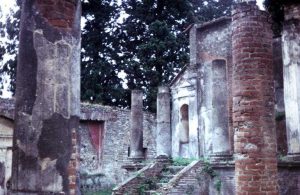 renk sees these objects as reflecting a purpose beyond ritualistic, more likely the desire at Pompeii “to authenticate the supposedly true Egyptian character of the temple.” Thus, for Isis and Serapis worshipers, their temple and cult are linked to the wider world of those deities, such as ancient Egypt, Alexandria and other Isiac shrines throughout the Graeco-Roman world.
renk sees these objects as reflecting a purpose beyond ritualistic, more likely the desire at Pompeii “to authenticate the supposedly true Egyptian character of the temple.” Thus, for Isis and Serapis worshipers, their temple and cult are linked to the wider world of those deities, such as ancient Egypt, Alexandria and other Isiac shrines throughout the Graeco-Roman world.
Egyptian Artifacts in Pompeiian Commercial Spaces
A young woman who had recently graduated from the University of Arkansas, Kelsey A. Myers, also examined the Isis cult at Pompeii. Her paper, presented at the 2021 AIA Annual Meeting (held virtually), focused on the Egyptian artifacts of Pompeii that have been found in the business context, which has been less studied than art and artifacts found in domestic settings.
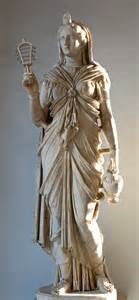 Myers has been studying the Egyptian-themed art and artifacts of shops and workshops, most of which are related to the cult of Isis. She found that this artwork is often tied to leisure in the same way that private domestic artwork was. The scenes, which were often related to the Nile River, that craftsmen and traders placed in commercial spaces – public, not private – appear to be used by these shopkeepers to advertise “their piety and cult affiliation to attract customers.” In this way, having Isis “in the shop” further served as “a patron and protector of commerce.”
Myers has been studying the Egyptian-themed art and artifacts of shops and workshops, most of which are related to the cult of Isis. She found that this artwork is often tied to leisure in the same way that private domestic artwork was. The scenes, which were often related to the Nile River, that craftsmen and traders placed in commercial spaces – public, not private – appear to be used by these shopkeepers to advertise “their piety and cult affiliation to attract customers.” In this way, having Isis “in the shop” further served as “a patron and protector of commerce.”
Roman Villas on the Bay of Naples
A doctoral candidate at Boston University, Alexandria H. Yen, has been examining cubiculum 16 in the Villa of the Mysteries at Pompeii, specifically the trompe l’oeil door. At a paper delivered at the 2021 AIA Annual Meeting, Yen argues that these types of doors are “mostly found in public-facing spaces such as entryways or dining rooms, but a few also appear in a more secluded space,” such as this cubiculum. Further, the painting of this “fake door” in this room, and in another villa near Pompeii, was intentional, making these cubicula more multipurpose and public than just mere bedrooms.
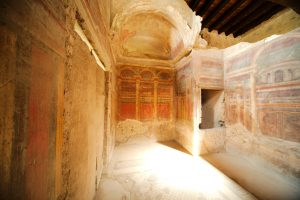 The creation of these painted doors in both the cubicula and adjacent rooms – which contained dining structures (triclinia) – formed “entertaining complexes” in these residences of wealthy owners, Yen postulates. Furniture was mobile, so pieces could have been moved in and out as necessary. Wall paintings in these villas were made to be impressive, so it makes sense that an well-crafted trompe l’oeil door might be commissioned not just for the owner’s enjoyment but also to regale his guests and colleagues.
The creation of these painted doors in both the cubicula and adjacent rooms – which contained dining structures (triclinia) – formed “entertaining complexes” in these residences of wealthy owners, Yen postulates. Furniture was mobile, so pieces could have been moved in and out as necessary. Wall paintings in these villas were made to be impressive, so it makes sense that an well-crafted trompe l’oeil door might be commissioned not just for the owner’s enjoyment but also to regale his guests and colleagues.
Yen’s study complicates how we understand public and private spaces in the Roman Empire, which can have implications for NT studies and the history of the early church.
The Pompeii Mapping Project
Eric Poehler, Associate Professor of Classics at the University of Massachusetts Amherst, leads the Pompeii Bibliography and Mapping Project. This project enables users to “explore all 640,000 square meters of Pompeii’s urban landscape from an overview of the entire site to individual objects, such as fountains, millstones, or stepping-stones.” The mission of the Project is to explore the ways in which the physical landscape of Pompeii can be used to structure and examine the more metaphorical type of landscape such as publications. This approach – the ability to have images of Pompeii’s structures and streets in the same digital place as the published research on them – is very helpful to students, the public and researchers alike.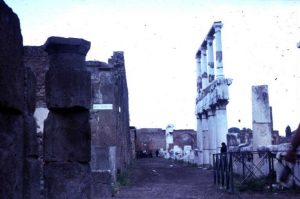
A related project at UMass Amherst, the Pompeii Linked Open Data (PLOD) project, is the cataloguing of the approximately 8,000 wall paintings from Pompeii. According to AIA’s website, “PLOD will make it possible to search not only for a painting style, mythological figures, or decorative motifs but also to search for them by house, room (and room type), and even by the specific wall upon which they were painted.”
Significance and Conclusion
Even though archaeological excavations have been underway at Pompeii since the 18th century, and one might think that there is nothing more to be said about it, the site still provides rich fodder for continuing scholarly scrutiny. Archaeological finds from and new perspectives on Pompeii are fascinating and important in themselves as they provide additional data on life in the early Roman Empire. This data in turn enhances and enlarges our knowledge of the lives of Jews, early Jesus followers and pagans during that era – what the buildings would have looked like in which these people lived and worked, what the streets would have looked like, how the neighborhoods in an urban setting would have been configured, the relationship between domestic and public space, what the religious motifs may have been and how and where they may have been depicted, and the quality and quantity of art in the city. All of this knowledge impacts NT scholarship, even though early Jesus followers may not have had anything to do with Pompeii per se before it was destroyed in 79 CE.
In Part II, we will see how archaeological insights also provide a basis for examination of early Christian literature, including a document as extensively studied as one of St. Paul’s authentic letters.
Resources and Links
Archaeological Institute of America (AIA)
Poehler, Eric web page, University of Massachusetts Amherst
Pompeii Bibliography and Mapping Project, University of Massachusetts Amherst
Pompeii Linked Open Data (PLOD) project, University of Massachusetts Amherst
Society of Biblical Literature (SBL). Note that VA’s registration fee for the 2020 Annual Meeting was partially offset by a generous grant from the National Coalition of Independent Scholars.
